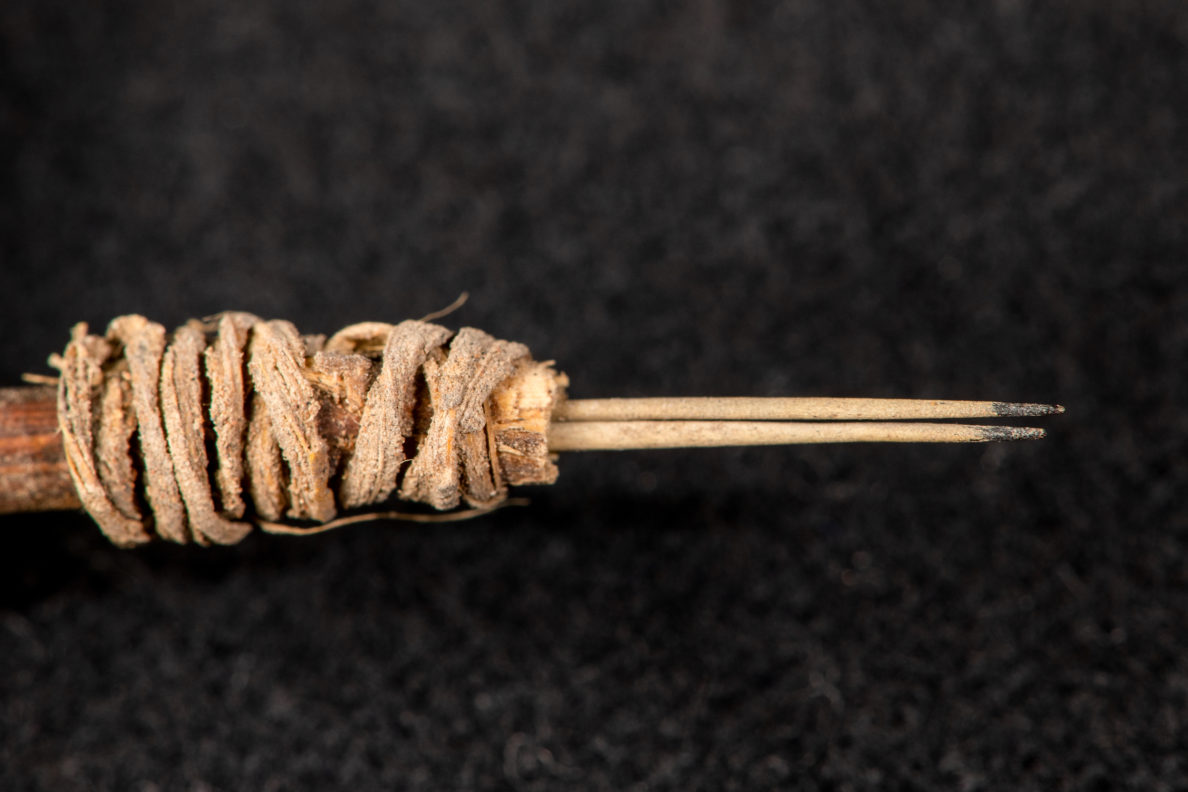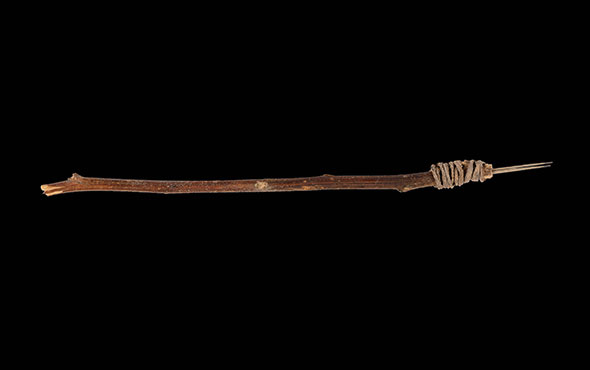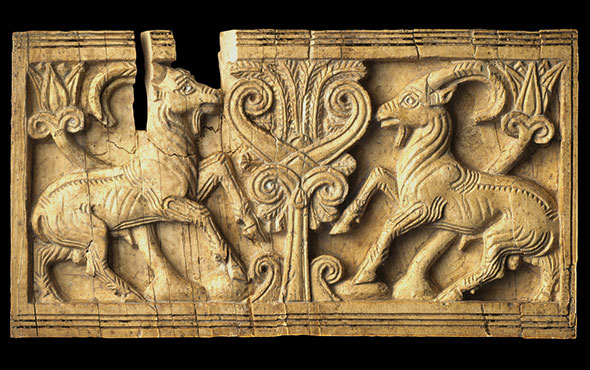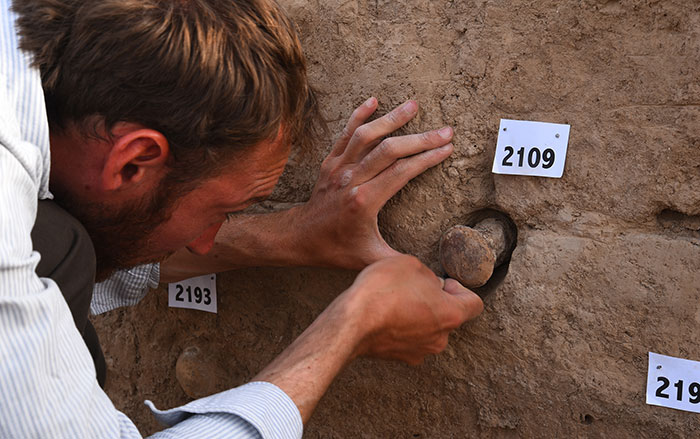
PULLMAN, WASHINGTON—Live Science reports that an object in storage at Washington State University has been identified as a 2,000-year-old tool used by ancestral Pueblo people living in what is now southeastern Utah to create tattoos. The nearly four-inch-long pen was made from two prickly pear cactus spines tied to a handle of skunkbush sumac with yucca-leaf strips. Andrew Gillreath-Brown of Washington State University analyzed its sharp, pointed ends with a scanning electron microscope and found that the black stains contain carbon, which is often used as pigment. He also attempted to create tattoos with a replica pen on fresh pig skin. The tool pushes back evidence for the practice of tattooing in western North America by more than 1,000 years, Gillreath-Brown said. Similar implements have been found in Arizona and New Mexico, but the oldest has been dated to between A.D. 1100 and 1280. To read in-depth about evidence of tattooing in the archaeological record, go to “Ancient Tattoos.”










